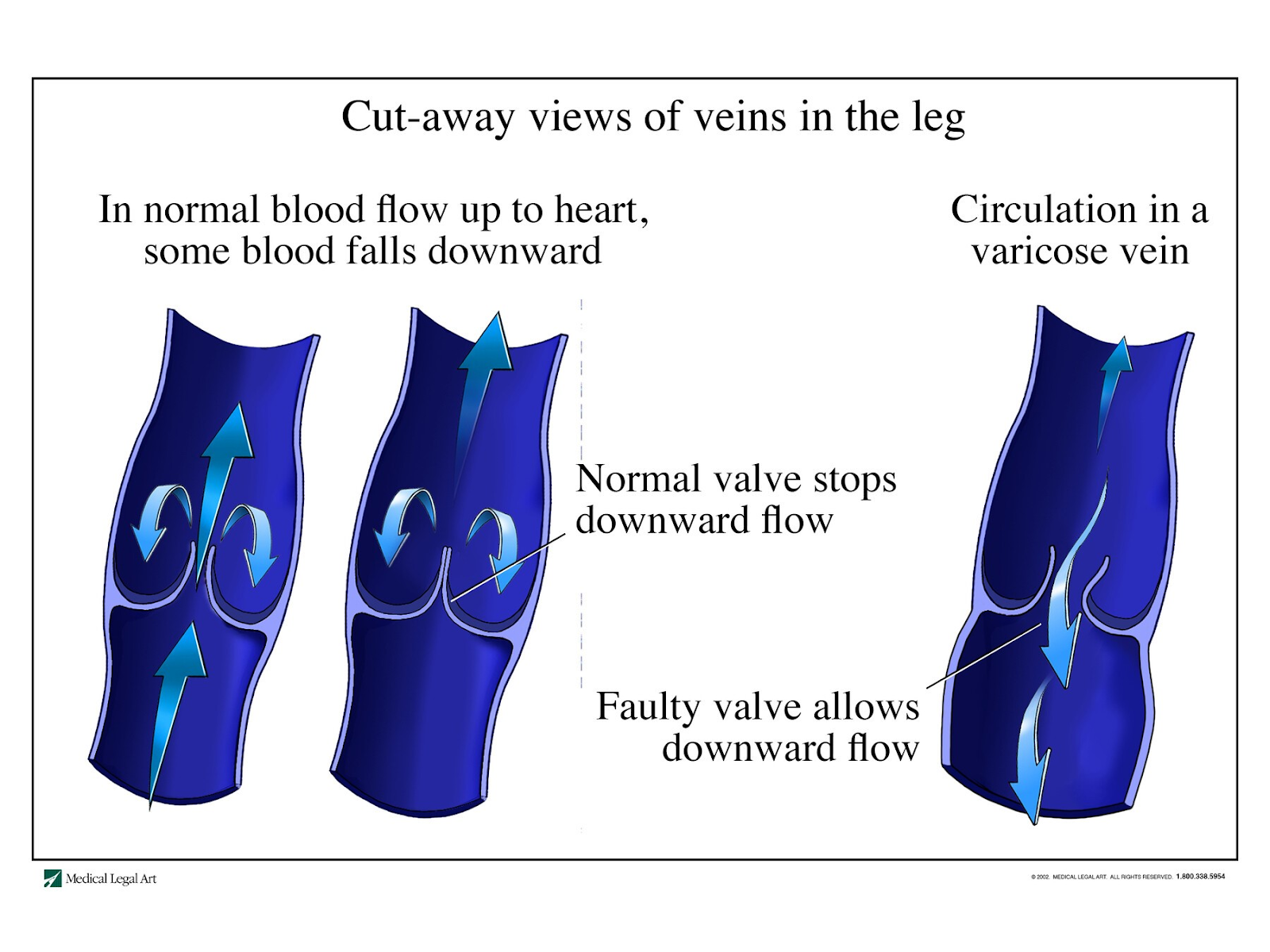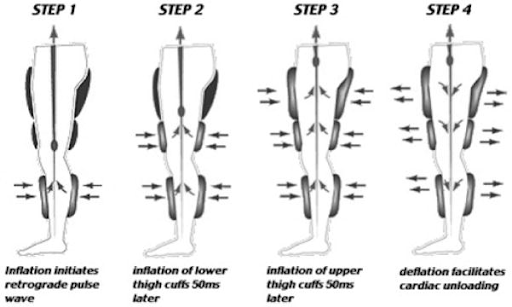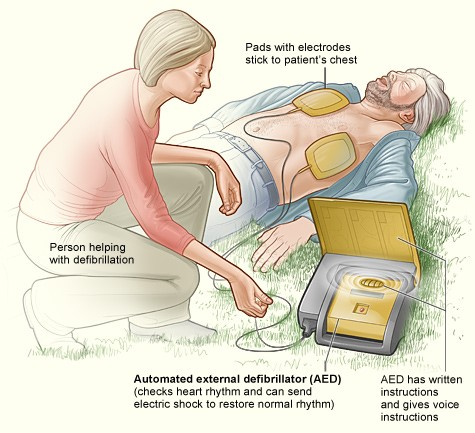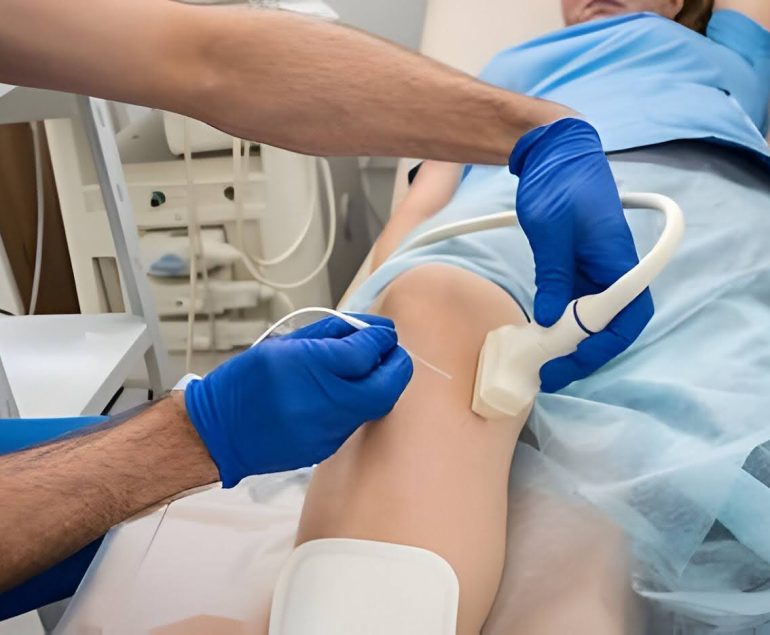Venous insufficiency refers to a condition in which the veins in the legs (or sometimes other parts of the body) have difficulty returning blood back to the heart efficiently, leading to pooling of blood in the lower extremities. This condition typically occurs when the valves inside the veins, which help prevent backward flow of blood, become damaged or weakened, resulting in venous reflux (backward flow of blood) and increased pressure in the veins.
Causes
Several factors can contribute to the development of venous insufficiency, including:- Chronic Venous Disease (CVD): Prolonged standing or sitting can increase pressure on the veins and impair valve function over time, leading to venous insufficiency.
- Deep Vein Thrombosis (DVT): Blood clots in the deep veins of the legs can damage vein walls and valves, disrupting normal blood flow and contributing to venous insufficiency.
- Varicose Veins: Enlarged and twisted veins (varicose veins) can impair venous circulation and valve function, predisposing individuals to venous insufficiency.
- Obesity: Excess body weight can increase pressure on the veins and contribute to venous insufficiency.
- Pregnancy: Hormonal changes and increased blood volume during pregnancy can place additional stress on the venous system, leading to venous insufficiency in some women.
- Family History: Genetic factors may predispose individuals to venous insufficiency, with a family history of varicose veins or venous disease increasing the risk.
- Inactivity: Lack of regular physical activity can impair venous circulation and contribute to venous insufficiency.
Symptoms
Venous insufficiency can cause a variety of symptoms, which may include:- Swelling (edema) in the legs or ankles, especially after prolonged standing or sitting
- Pain or aching sensation in the legs, particularly with prolonged standing or walking
- Heaviness or fatigue in the legs
- Itching or burning sensation in the affected area
- Skin changes, such as discoloration, thickening, or ulceration
- Visible varicose veins or spider veins
- Restless legs syndrome or leg cramps, especially at night
Diagnosis
The diagnosis of venous insufficiency is typically based on a combination of clinical evaluation, medical history, and diagnostic tests, which may include:- Physical Examination: Healthcare providers may assess the legs for swelling, varicose veins, skin changes, or other signs of venous insufficiency.
- Doppler Ultrasound: Duplex ultrasound is commonly used to evaluate venous blood flow, detect venous reflux, and assess the structure and function of the veins.
- Venous Pressure Measurements: Invasive tests such as venous pressure measurements may be performed in some cases to assess venous hemodynamics and confirm the diagnosis of venous insufficiency.
Treatment
Treatment for venous insufficiency aims to relieve symptoms, improve venous circulation, and prevent complications. Depending on the severity of the condition, treatment options may include:- Compression Therapy: Wearing compression stockings or bandages can help improve venous circulation and reduce swelling in the legs.
- Lifestyle Modifications: Elevating the legs, avoiding prolonged standing or sitting, staying physically active, and maintaining a healthy weight can help alleviate symptoms and prevent progression of venous insufficiency.
- Medical Management: Medications such as diuretics or venoactive drugs may be prescribed to reduce swelling and improve venous tone.
- Minimally Invasive Procedures: Procedures such as endovenous ablation, sclerotherapy, or ambulatory phlebectomy may be performed to treat varicose veins and address underlying venous insufficiency.
- Surgical Interventions: In severe cases of venous insufficiency or complications such as venous ulcers, surgical procedures such as vein ligation, vein stripping, or venous bypass surgery may be recommended.
Complications
Untreated or inadequately managed venous insufficiency can lead to complications such as:- Venous ulcers: Chronic wounds that develop on the legs due to poor circulation and impaired healing.
- Superficial thrombophlebitis: Inflammation and blood clot formation in the superficial veins, which can cause pain and swelling.
- Skin changes: Chronic venous insufficiency can lead to skin discoloration, thickening, or hardening (lipodermatosclerosis) of the skin in the affected area.
- Cellulitis: Bacterial infection of the skin and soft tissues, which can occur in areas with compromised circulation and impaired lymphatic drainage.




